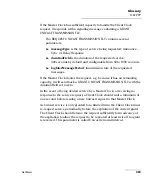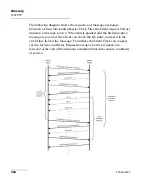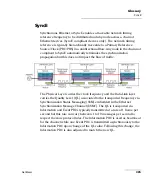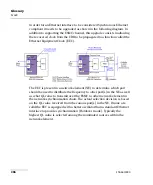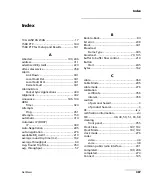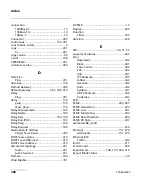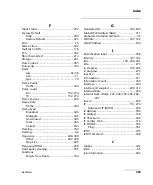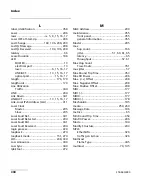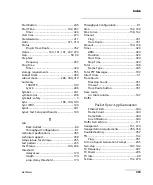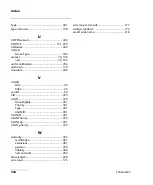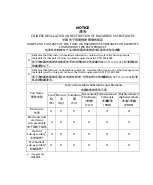
Glossary
NetBlazer
381
1588 PTP
Peer Delay
mechanism uses message Pdelay Request, Pdelay
Response, and if required Pdelay Response Follow Up. This
mechanism is restricted to topologies where each peer-to-peer port
communicates PTP messages with, at most, one other such port. Peer
Delay is not supported by the Telecom Profile.
In order to minimize traffic on the network, PTP can operate in different
modes:
Two-way
operation uses Sync/Follow Up, Delay Request, and Delay
Response messages.
One-way
operation uses only the Sync/Follow Up messages. This
mode of operation is used to synchronize a Client clock in frequency
only. The Master clock and Client clock phases are not aligned.
Two-step
clock mode uses the optional Follow Up message to carry
the T1 time stamp.
One-step
clock mode uses the Sync message to carry the T1 time
stamp; no Follow Up message is transmitted by the Master clock,
therefore less traffic on the network.
Client clock synchronization is achieved with a 2-part process:
Part 1: Path delay measurement using bidirectional messages
Mean path delay measurement (MPD) = ((T2-T1) + (T4-T3)) / 2
Part 2: Clock phase offset correction
Offset = (T2-T1) - MPD
The offset information is used by the Client clock to adjust the frequency of
its oscillator in order to keep the phase offset close to zero.
Summary of Contents for FTB-860
Page 7: ...NetBlazer vii B Glossary 371 Acronym List 371 VLAN 379 1588 PTP 380 SyncE 385...
Page 12: ......
Page 16: ......
Page 20: ......
Page 30: ......
Page 84: ......
Page 110: ......
Page 122: ......
Page 152: ......
Page 166: ......
Page 182: ......
Page 192: ......
Page 224: ......
Page 366: ......
Page 376: ......
Page 382: ...Specifications 370 FTB 860 880 Straight Through Cable 1000 Mbit s Crossover Cable 1000 Mbit s...

















